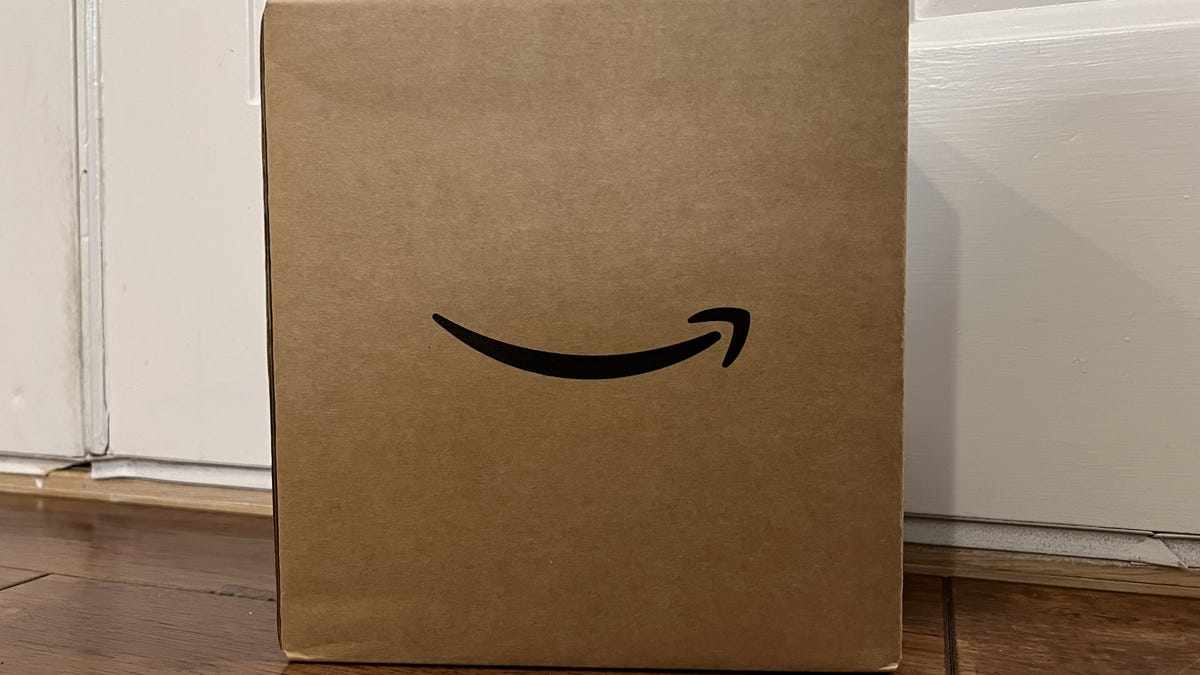Technologies
Amazon’s Big Year of Thinking Small
Amazon built like our pandemic-fueled shopping spree would never end. Now it has, and the company’s shrinking.

We all came out of the last three years changed. Amazon is no different.
All that online shopping you did during the pandemic added to soaring demand, which combined with other economic forces to push prices higher. Costs got too high for the tech industry, too, driving companies to shrink their ambitions – even the gargantuan Amazon.
Amazon was already the Goliath of US e-commerce before the pandemic, representing more than 40% of the market, according to Statista. With the boom in online shopping, fueled first by lockdowns and then by stimulus cash, the company’s profits shot up for more than a year.
Then came the bust. Amazon’s growth stalled out in the middle of 2021, and it posted its first loss in seven years at the beginning of 2022. By November, Amazon was the first company in the world to lose $1 trillion dollars in value, Bloomberg reported.
The problem wasn’t just that we stopped shopping through our misery. Amazon, like a lot of tech companies, banked big time on our new buying behaviors. As we went back to brick-and-mortar stores and cut our spending this year, the company was left with an oversized workforce and a hulking logistics network it couldn’t support. This year, Amazon and its competitors scrapped large chunks of what they built during the pandemic.
For you, Amazon’s new frugality means its advancements on flashy new gadgets — or the inexpensive ones you use to set timers, create reminders and check the weather — may get less of the company’s devotion next year.
Amazon’s most visible sign of retreat was the planned layoffs, which the company has confirmed will happen without giving the number of employees it plans to cut. Estimates in new reports range from 10,000 to 20,000 people who will lose their Amazon jobs in the coming months, but that’s just the most recent glimpse of trouble. Amazon began telling investors in October 2021 that it had built up its warehousing and air freight capacity too much in response to early pandemic demand.
The middle of this year started to reveal casualties elsewhere in the company. Amazon shut down its physical bookstores and some Amazon Go convenience store locations. It jettisoned its Amazon Care health care service on doubts it would ever be profitable. And departments in charge of customer favorites like Alexa-powered devices took a disproportionate hit from the layoffs so far.
Amazon declined to provide a comment for this story but directed CNET to remarks Amazon CEO Andy Jassy made during the New York Times DealBook Conference. Jassy said then that Amazon wasn’t done making bets on businesses that could have long-term payoffs.
«What we’re trying to do is streamline our costs in a bunch of different areas, while at the same time making sure that we keep betting on the things that we believe long-term could change,» Jassy said.
Still, this year’s cuts at Amazon reflect a turn toward immediate profitability, said Neil Saunders, a retail analyst at GlobalData, noting that the company hasn’t found a way to profit from Alexa devices.
It’s a sign of an industry-wide reckoning with shoppers hitting the brakes on spending, Saunders said, adding, «A lot of companies behaved as if it was a permanent shift.»
Peaks and valleys
E-commerce hit startling heights in 2020. Shoppers dropped earnings and stimulus cash on home furnishings, gardening supplies and electronics, and growth of online shopping was remarkable. It shot up from a steady growth rate of around 16% at the end of 2019 to more than 44% in the summer months of 2020.
E-commerce is still growing today, but the frenzy is over.
But while spending was still at unprecedented levels, Amazon used the extra cash to feverishly build warehouses and air hubs. It doubled its ranks from just under 800,000 employees at the end of 2019 to more than 1.6 million by the end of 2021. And it wasn’t just Amazon. Shopify, the company behind many standalone online shops, also went on a hiring spree. Social media companies like Meta and Twitter benefited too, bringing in extra advertising revenue from merchants who aimed targeted ads at shoppers sitting at home.
Figures from the US Census Bureau show e-commerce spending is now where it would be if it had just kept growing at the same steady clip that it was before the pandemic. Even though the feverish buying started to cool last year, a few tech chiefs have said they thought the shift to online shopping was permanent. It wasn’t.
«Those chickens are coming home to roost,» Saunders said.
When Meta announced layoffs of 11,000 employees in November, CEO Mark Zuckerberg conceded it was a mistake to assume increased revenues would endure. Shopify cut 10% of its workforce in July, with CEO Tobi Lutke saying he was wrong to predict a permanent leap ahead of five to ten years in the growth rate of online shopping.
Amazon’s layoffs will also be significant. Proportionally, they’re on track to represent the company’s biggest workforce reduction since the 2001 dot-com bust, which hit 15% of its staff, according to the New York Times. Nonetheless, Jassy said Amazon made the right decision to scale up rapidly starting in 2020, adding that it was better to get too big than to stay too constrained to meet demand from shoppers and from sellers who use the company’s marketplace.
The slowdown shouldn’t have caught the heavyweights of e-commerce by surprise, said Andrew Lipsman, a retail analyst at Insider Intelligence. We were going to regain access to in-person stores at some point, and stimulus payments weren’t going to last forever. But even if cash-flush tech companies knew there would be an inevitable bust, they couldn’t let the opportunity to scale up and capture all our shopping dollars pass them by.
«They tend to think of it as an arms race,» Lipsman said. «When their major competitor is investing heavily, they don’t want to be the ones not doing it.»
Slowing innovation
That bitter downswing has forced Amazon to pull back on some of its flashy pet projects, like Alexa, where a large portion of the layoffs took place. While Alexa-powered devices like Echo smart speakers and displays dominate the smart home market, they’re priced to lose money. And even though Alexa made huge advances in voice recognition and AI-generated speech, the technology hasn’t succeeded in getting people to shop by voice, analysts say.
Amazon’s health care initiatives are also seeing cutbacks. The company said Amazon Care, a service that offered telehealth and in-home medical appointments, would close down at the end of 2022. (Amazon says it’s pushing forward with its purchase of One Medical, which offers primary care clinics and telehealth services).
Also on the chopping block were Amazon’s brick-and-mortar bookstores and its remaining «Four-star Stores,» which analysts say never found a purpose.
Amazon hasn’t killed the Alexa division or its health care efforts entirely, and Jassy has said the company is still betting on innovations like autonomous vehicles with its Zoox business. But the moves show Amazon is unwilling to sink quite as much money into services just for the sake of destabilizing or owning a market. That’s a contrast to its earliest approaches with selling books and music online, which Amazon pursued while taking a loss for seven years before finally turning a profit in 2001, said Sucharita Kodali, a retail analyst with Forrester.
«The DNA of Amazon was, ‘we’re going to lose money,'» Kodali said. Now the company must invest in things that’ll pay off sooner rather than later, she added.
And just like everything about Amazon, when the company cuts back, it does it in a big way.
Technologies
This New Car Feature Uses AI to Keep You From Missing Your Exit
Google Maps’ live lane guidance is being integrated into Polestar’s head-up display.
Technologies
Hurry to Nab the Baseus Bowie MH1 Headphones for Over Half Off With This Early Black Friday Deal
This deal drops the price of this premium pair to just $47, but this discount ends soon.

High-quality noise-canceling headphones can cost a pretty penny, especially if you are after adaptive ANC, all-day comfort, and a reliable battery life. Most options with all these features sit well over $100, but we just found a way to score a premium pair for less than $50.
Amazon has a solid early Black Friday deal on the Baseus Bowie MH1 headphones. You can get them for 20% off right now, which drops the price to $80. But stack that with the $25 on-page coupon and use the promo code 8JWTGEUN at checkout, and you slash another $33 off. That brings the final price down to just $47, which is a steal considering all the features you are going to enjoy.
The headphones come with cloud-soft protein leather earcups with resilient memory foam for cloud-like comfort. The pair is capable of blocking up to 99.8% of noise with –48 dB deep noise cancellation, and it adapts to your surroundings as needed.
Hey, did you know? CNET Deals texts are free, easy and save you money.
The 36mm drivers and full-range LCP diaphragms give you clear, rich sound no matter what you listen to. In addition, with Baseus Immersive Spatial Acoustics, the audio surrounds you for a more natural listening experience. For clearer calls, the headphones also pack 5-mic sound sensors with AI-powered voice enhancement and wind-noise reduction. You won’t have to repeat yourself constantly.
Battery-wise, you get up to 80 hours of playtime with ANC off, and 55 hours with it on. A quick 10-minute top-up can also get you up to an additional 10 hours of playback, which is great for when you’re out and about.
HEADPHONE DEALS OF THE WEEK
-
$200 (save $151)
-
$199 (save $150)
-
$329 (save $100)
-
$328 (save $72)
Why this deal matters
High-end audio gear doesn’t come cheap. This deal takes over 50% off a powerful pair of headphones, making the upgrade easy. It won’t last long, though, so it’s best to snap it up sooner rather than later.
Join Our Daily Deals Text Group!
Get hand-picked deals from CNET shopping experts straight to your phone.
By signing up, you confirm you are 16+ and agree to receive recurring marketing messages at the phone number provided. Consent is not a condition of purchase. Reply STOP to unsubscribe. Msg & data rates may apply. View our Privacy Policy and Terms of Use.
Technologies
Apple’s iPhone Pocket Is a $230 Gadget Mankini. We Tried It Out to Size It Up
The stretchy fabric satchel for your iPhone makes a fashion statement. CNET’s Bridget Carey wore it and waved it, and dubbed the iPhone Pocket «Apple’s Labubu.»

Remember iPod socks? Those brightly colored woolly wraps that swaddled your iPod like it was an infant? Apple sold them starting in 2004 for the better part of a decade. In things we did not have on our bingo card for 2025, Apple has decided now is the time to bring back the knitwear for the latest iPhones.
Meet the iPhone Pocket: a glorified yarn sling for your phone and whatever else you can cram in there without stretching the poor thing into oblivion. If we’re being catty, it does look a bit like a sweater you shrank in the wash and then tried to stretch out. Or maybe a mankini.
But hey, it could just be the zhuzh you’re looking for.
The iPhone Pocket is on sale now, but you can’t walk into just any old Apple Store and get it. Apple is selling it in 10 select shopping locales, like SoHo in New York, Regent Street in London, Marché Saint-Germain in Paris and Orchard Road in Singapore. Everyone else will just have to order it online like it’s from Temu.
High fashion does not come cheap. The short strap design will set you back $150, while the long strap version costs $230.
Don’t miss any of our unbiased tech content and lab-based reviews. Add CNET as a preferred Google source.
Getting our hands on an iPhone Pocket
On Friday, the first day the iPhone Pocket went on sale, CNET’s Bridget Carey picked up one each of the long and short versions (blue and pink, respectively) at the Apple Store in fashion-centric SoHo, the only Apple retail store selling it in the US. Customers there could go hands-on with the woven slings, giving the Pocket a stretch or sample slipping their iPhones into it.
The longer, crossbody model held Carey’s phone securely, and she felt confident wearing it around New York throughout the day. She also put it through some impromptu testing. «I’ve been swinging it around and stuffing other items in it,» she said. «I’ve even tied it around my neck as a scarf and put it on my foot as a sock.»
So far, the Pocket has kept its shape. The material has some spring to it, and Carey thinks she could take it on errands with her kids and not have to worry. But it’s not tough enough for the washing machine. Instructions inside say the Pocket is to be hand washed and should not go in the dryer.
One of Apple’s suggestions for accessorizing with the iPhone Pocket, if you’re not doing crossbody, is to tie it onto the bag you’re carrying. That was not Carey’s first inclination. «I’m not sure I would feel comfortable hanging my phone like a keychain on my bag,» she said. «But I still wanted to get a short Pocket because, well, I wanted to have a bit of fashion history. And I love pink.»
If she does go the bag-Pocket route, Carey said, «I’ll hook my Labubu off it, too. After all, this is Apple’s Labubu now, a hard-to-find fashion accessory that hangs on your bag.»
The fashion sense of the iPhone Pocket
Apple designed the iPhone Pocket in collaboration with fashion brand Issey Miyake, the designer behind the endless supply of black turtlenecks worn by Steve Jobs (and an Apple employee uniform that almost happened).
I’m no fashion expert, but fashion writer Tiffany Lo is, and she told me «the design embodies Issey Miyake’s signature pleat pattern and the idea of crafting it from a single piece of fabric. It’s instantly recognizable.»
The iPhone Pocket is a stretchy 3D-knitted pouch with ribbed textures that hugs your iPhone. It’s see-through when you tug at it, so you can glimpse your lockscreen. But Apple wants you to put more than your iPhone in this accessory. You’re encouraged to slip in AirPods, lip balm, a key fob, breath mints or any other pocketable item. The shorter iPhone Pocket is more like a wristlet bag, while the longer one turns your iPhone into a crossbody accessory.
The wearable tech pouch is certainly a fashion statement if you decide to drape it across your torso, perhaps like a sash of questionable decisions. Whether you carry it in-hand, tie it to your bag, or sling it on like a fashion-forward postman, you will definitely get some looks, perhaps confused ones. The short strap version comes in eight colors: lemon, mandarin, purple, pink, peacock, sapphire, cinnamon and black. The long strap comes only in those latter three colors.
So who is the iPhone Pocket for? Lo says it «could appeal to younger generations thanks to the design that allows users to wear it as a crossbody.» Given that Apple released crossbody straps for all its iPhones earlier this year, maybe it has some insights into what Gen Z really wants. Is it worth the $230, or even $150? Yes or no, it’s a far cry from the $29 the iPod socks went for back in the day.
-

 Technologies3 года ago
Technologies3 года agoTech Companies Need to Be Held Accountable for Security, Experts Say
-

 Technologies3 года ago
Technologies3 года agoBest Handheld Game Console in 2023
-

 Technologies3 года ago
Technologies3 года agoTighten Up Your VR Game With the Best Head Straps for Quest 2
-

 Technologies4 года ago
Technologies4 года agoBlack Friday 2021: The best deals on TVs, headphones, kitchenware, and more
-

 Technologies4 года ago
Technologies4 года agoVerum, Wickr and Threema: next generation secured messengers
-

 Technologies4 года ago
Technologies4 года agoGoogle to require vaccinations as Silicon Valley rethinks return-to-office policies
-

 Technologies4 года ago
Technologies4 года agoOlivia Harlan Dekker for Verum Messenger
-

 Technologies4 года ago
Technologies4 года agoiPhone 13 event: How to watch Apple’s big announcement tomorrow

